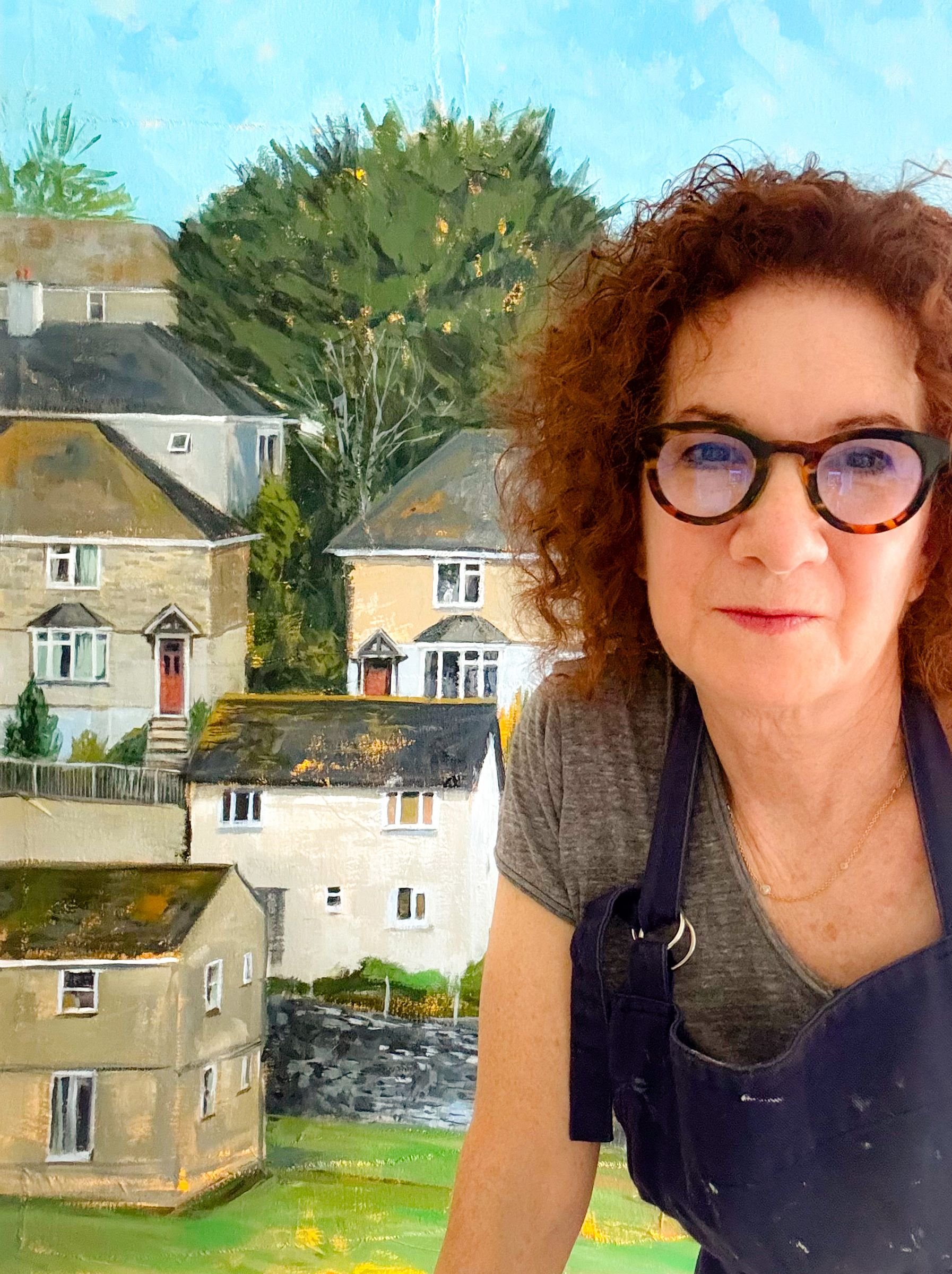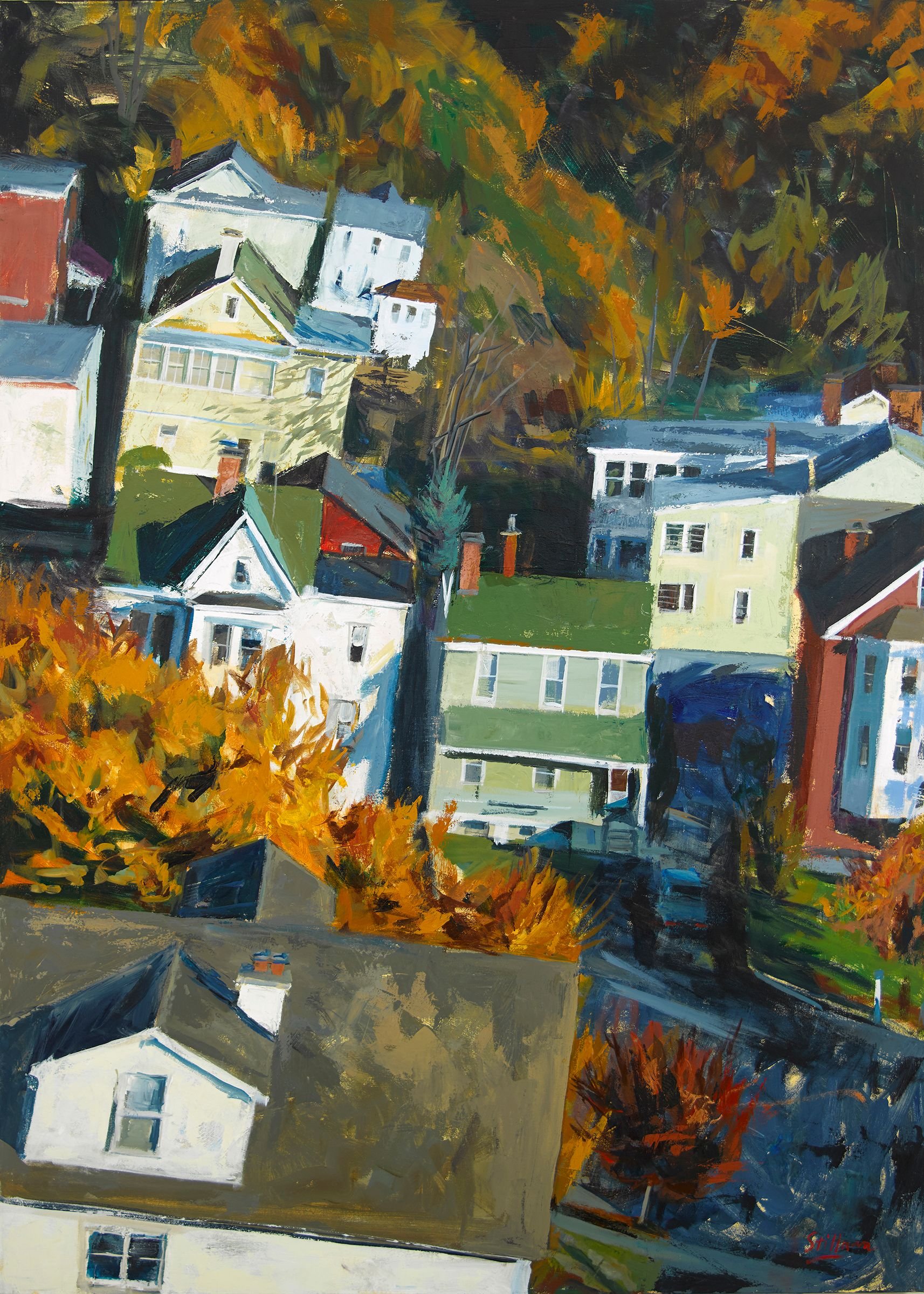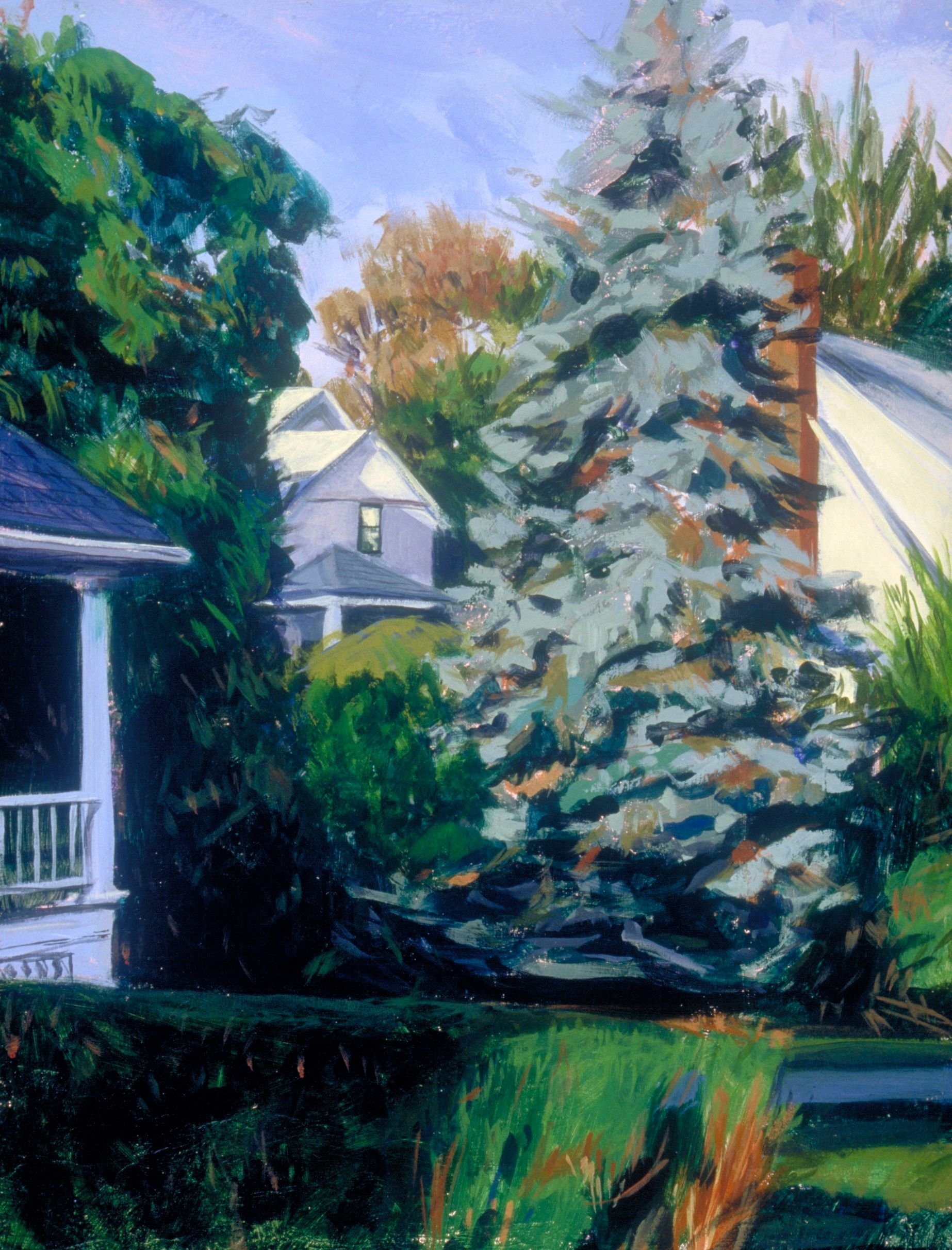ARTIST INTERVIEW: SUSAN STILLMAN
Please introduce yourself. How have you developed your passion for art into a career? What sparked the career change from an illustrator to a fine artist?
My name is Susan Stillman and I’m a painter living in a suburb of New York City called White Plains.
I can’t remember a time in my childhood when I wasn’t drawing and painting. There was never a question of me doing anything else.
My first career choice happened when I picked Illustration over Fine Art as my major at RISD. I knew I had to make a living somehow and wanted to be using my skills, rather than having an unrelated day job.
I stopped doing illustration after a good 12-year run, and spent the next 30 years painting commissions in my Home Portraits business. Teaching, too, has been a huge part of my professional life. I’ve been at Parson’s School of Design for over 40 years.
Throughout my entire career, I have always been doing my own personal work. The onset of COVID moved me to finally give up doing commissions and concentrate entirely on my own painting and the things needed to get the work out into the world.
When did you start becoming interested in painting Your surroundings? Why do you enjoy painting the landscapes and buildings where you live?
It was a trip to England 35 years ago that got me interested in the landscape. My husband and I traveled throughout the UK by car and had the most magical experience. Whenever the sun started to get lower in the sky and the colors in the landscape became intensely saturated, we’d pull over on the side of the road and I’d feverishly photograph. I was really moved by smaller more intimate landscapes as well, houses with their small cottage gardens. I did a series of large paintings based on that trip that formed my MFA thesis at Brooklyn College.
I’m an observer. My surroundings become the inspiration for my painting whether at home or away, so most of my inspiration is found on the suburban streets I see every day. There is a state of hyper-awareness one has while traveling. That is what I cultivate here at home. The light will shift and illuminate something that was invisible a few seconds before, and I rush to document that with my iPhone.
What initially inspired your most recent painting? Describe your creative process from start to finish.
I’m never working on just one painting at any time. I’ve been doing a lot of traveling recently and I’m currently working on a suite of small paintings based on a road trip in the southern US, and imagery from road trips in Cornwall and Scotland.
With small paintings, I rough in the large abstract shapes with local color, and promptly put the painting away. After some time, I’ll return for a second sitting. It’s a process of distilling the content to include only what is necessary to capture the moment. I work on heavily textured surfaces, which also helps me to simplify and not get caught up in details.
I always have a few larger, more complex canvases going at the same time. Those might take several months or years, with spurts of activity and time away to be able to see with fresh eyes.
How would you describe your style of work? What do you believe makes your work unique?
I call myself a colourist and describe my work as loose, painterly studies of light. Light’s transitory effects determine colour and change everything we see from second to second. One can compare this to capturing fireflies. Editing out whatever is unnecessary, I keep the original abstract shapes to anchor everything that comes after. I’ve struggled over the years not to overwork paintings, letting go of a lot of detail. The use of random texture applied over the ground helps with that, and also creates an animated surface.
Out of all your artwork, which piece has had the greatest impact on you?
I can single out several paintings that have been what I call transitional paintings through the years. These are the works that lead me to the next thing. I’ll include them here and explain.
London Doorway - This was my first successful balancing of textural, organic shapes contrasting the geometry of man-made architecture. I fell in love with that dichotomy and it still fuels most everything I do today.
Blue Spruce from Local Color - In this series, I began to play with rugged textures on wood panels. A few of these led directly to the Peripheral Visions series.
Yellow Green from Peripheral Visions - This textured small panel is one of a continuing series of fragmentary views of my own neighbourhood. It was one of the first small views that achieved a balance of observation and abstraction I was looking for. There are now well over 100 of these panels.
Dark Sky – I have been observing the view across the street every day, and have painted it multiple times. This large canvas crossed into a more narrative version, beyond observation.
Walkway Over the Hudson - The broader strokes and lack of sharper edges seemed to work dramatically with this large painting. It has become a guide for my subsequent works.
Who is your greatest artist inspiration? If you could ask them one question, what would it be?
There are so many. When I was younger, it was Degas. When transitioning to the landscape, I was looking at Wolf Kahn’s pastels, Jane Freilicher, Fairfield Porter, Stanley Spencer, my teacher Lois Dodd. Many of them were painting observationally when that was totally out of fashion. Rather than asking a question, I would applaud them for staying true to their own interests.
Describe your most memorable moment as an artist. What have been your greatest achievements so far, and what are your aspirations for the future?
It’s hard to choose just one memorable moment. I’ve had a few solo shows over the years that allowed me to view years of work in large open gallery spaces. To see one’s work in this way is a revelation. As artists, we go from painting to painting and stack them up in the closets and shelves of our studios. We may get to see them on a collectors wall but in general, we see everything one or two paintings at a time.
To have the opportunity to fill a space with work and walk through that space is like walking through your past, seeing what you have accomplished over the years. That experience is the best antidote to self-doubt and makes me very proud of how I’ve chosen to spend my life. I want to continue doing this as long as I am breathing.
Why do you think art is important in society?
Art is essential to culture and society. Artists teach us how to see. They demonstrate how to reflect on our lives and our place in history. A society without art would be barren and bleak.












